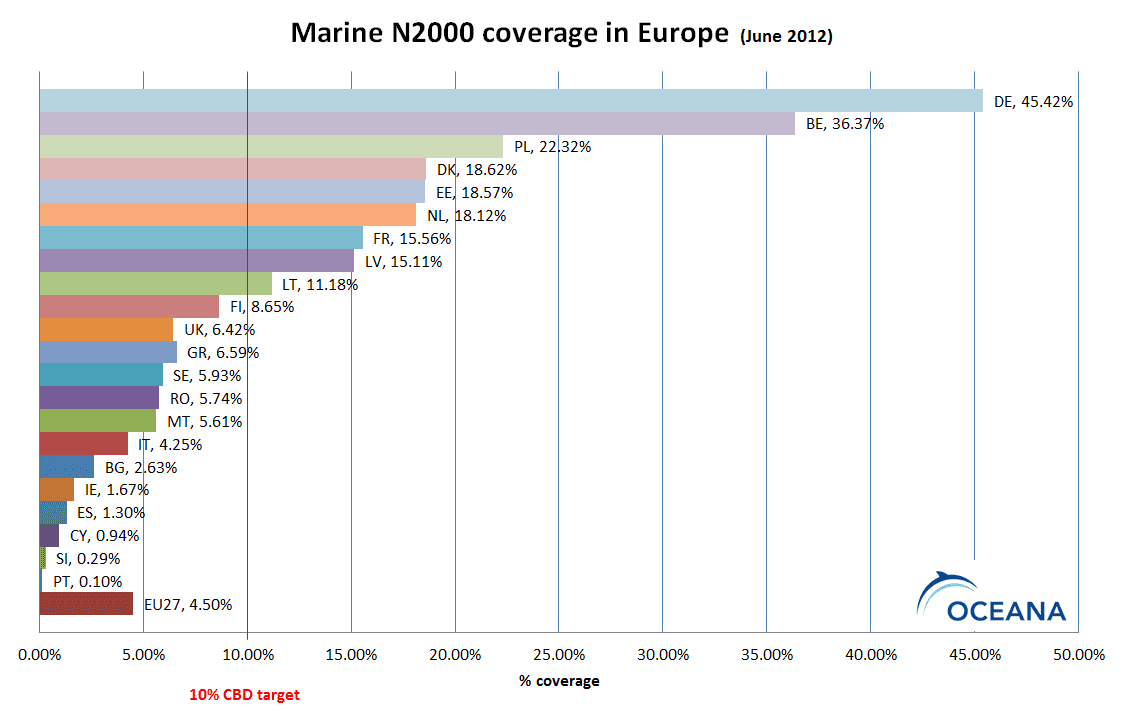Natura 2000 Network: Overview
The Habitats Directive is the EU golden standard for nature conservation, as it lists species and habitats of community interest for the conservation of which Member States must create protected areas. Few of them are in the marine domain: 18 species and 5 habitats.
These protected areas constitute the Natura 2000 Network. In the first stage, Member States nominate protection areas, known as Sites of Community Importance (SCIs), which are thus subject to a preventive protection regime. Afterwards, in a maximum period of 6 years, the corresponding management plans must be drawn up and, once they are ready, the SCIs must be declared to be Special Areas of Conservation (SACs). Once SACs are declared, real management of these areas will start through measures designed for conservation of the habitats and species which they shelter.
The SCI proposal has not moved at the same pace in all regions. For example, the Atlantic SCI list was submitted in 2004 and the Mediterranean SCI list was submitted in 2006. Thus, 2012 is the deadline to turn the Mediterranean SCIs into SACs. In addition, this year is the 20th anniversary of the Habitats Directive.
More specifically, on 21st September 2012, the Mediterranean coastal countries that are members of the EU must have completed the following tasks:
a) Drafting the management plans for all the SCIs proposed until 2006, published in the first SCI list for the Mediterranean region.
b) Declaring all those SCIs to be SACs.
In parallel to this process, the European Commission is currently evaluating, in a number of seminars divided by biogeographic regions, the capacity of the Natura Network as regards the representative nature of the species and habitats present in the protected areas. In the case of the Natura Network for the Mediterranean region, in 2010 the Commission declared, following an exhaustive review performed by experts, that most of the proposals submitted by the countries were “Insufficient”.
20 years after the entry into force of the Habitats Directive, the fact that most countries have not created sufficient protected areas may lead to economic sanctions. The same is the case for management plans and the SAC declaration: the 6-year deadline was over in 2010 for the Atlantic region and in 2012 for the Mediterranean region, and we are now facing a scenario of repeated non-compliance with international conservation objectives, with serious economic and environmental consequences.



